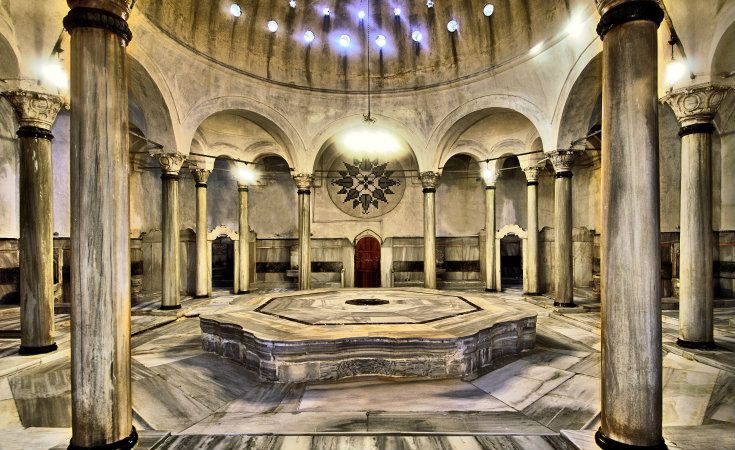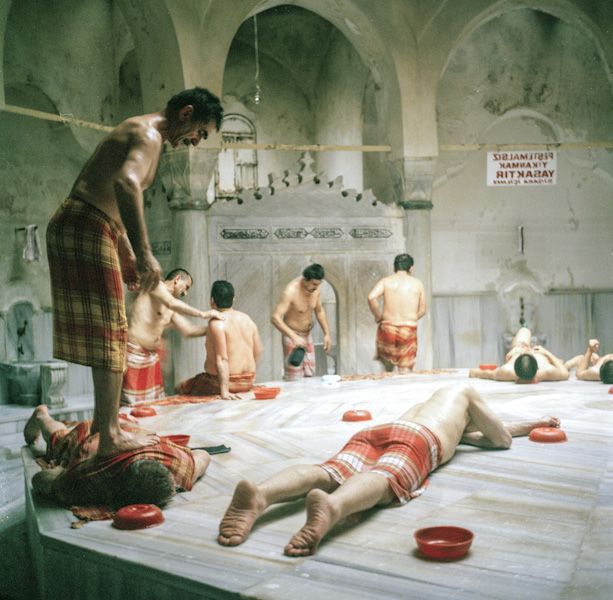There’s a lot to see and enjoy when you visit Turkey. This wonderful nation has the Museum of Anatolian Civilizations in Ankara, the Blue Mosque in Istanbul and delicious Turkish ice cream that originated from Kahramanmaraş.
If you’re planning to check out Turkey, especially in Istanbul, your visit won’t be complete without visiting a historic hammam (bathhouse) and taking a Turkish bath.
A communal bath, such as the onsen in Japan, may sound like a foreign concept to any person living in the Western world. This kind of bathing setup, for others, is part of the fabric of their culture.
If you’re the adventurous type of traveler who wants to try something new (and possibly rejuvenating), consider visiting a hammam spa in Turkey and adding a Turkish bath to your travel bucket list.
What’s So Special About a Turkish Bath?
A Turkish bath is a public bathing facility that has roots in ancient history. Some travelers take it to relieve stress and muscle tension, while others visit it to have a unique historical and cultural experience.
Turkish baths aren’t limited in Turkey. You’ll find them in nations once ruled by the Ottoman Empire, including Syria, Hungary and Greece. You’ll also come across Victorian Turkish baths in Western countries like England.
A Turkish bathhouse somewhat resembles a Roman bath. Back then, the ancient Romans enjoyed palatial bathing complexes, with areas for socializing, washing and relaxing. Depending on where you end up, a Turkish bath may feature marble interiors and domed ceilings.
You may also come across beautiful mosaic tiles adorning the floors or walls. Some bathhouses even have a cupola (a small dome) with small star-shaped windows. These tiny windows allow in just enough natural light to create a dreamy atmosphere and play with steam.
Turkish Baths and Hammam
The Arabic word for a Turkish bath is hammam. Individuals may use this term to describe communal bathhouses linked to Islamic culture.
There are some slight differences between an Islamic hammam and a Turkish bath. Hammams don’t have pools. Instead, they feature basins of cool water that visitors can use.
On the other hand, a Turkish bath has hot and dry air instead of steamy air. What’s more, Victorian-style baths may have a communal pool to take a dip after a person spends their time in a hot room.
Why Get a Turkish Bath

If you like relaxing at spas and bath massages, you shouldn’t pass up the opportunity to visit a Turkish bath on your next trip abroad.
Here’s why you should add this activity to your bucket list:
- A Trip to the Past – A visit to the hammam or Turkish bath allows you to envision life as an ancient Roman or follow the footsteps of 14th-century sultans.
- Culturally Immersive Experience – You participate in an ancient tradition that’s important to many regions in the globe. You’ll experience your destination through the eyes of locals and relax as you take in your surroundings.
- Invigorating – A Turkish bath helps moisturize your skin, ease muscle tension and promote circulation. This may be what you need after a long day of touring and shopping.
What Do You Do in a Turkish Bath?
When you enter a Turkish bath, you’ll find that there are separate sections for male and female bathers. The bathing rituals, however, are similar between the sexes. The communal bathing experience is about leaving yourself in the capable hands of your tellak (male attendant) or natir (female attendant). These people guide bathers through the progressively warmer sections of the bath.
As for what you should wear, the attendants typically offer a thin Turkish bath towel called peshtemal to wrap yourself along with a regular towel that you can use after bathing.
Wearing a bikini or a bathing suit is fine. Take note that since few others (and no Turks) will be wearing anything, swimwear isn’t recommended for the true experience. Historic Turkish baths usually have a dressing section where you can safely stow away your clothes and belongings.
Once you’re ready, the bath attendant will guide you into the warm section.
Next comes the scrubbing done by the attendant. Just sit back, relax and let the attendant scrub every inch of your body.
After scrubbing, make your way to a gobektasi (a warm marble slab) in the hot section. Your attendant will give you a nice, sudsy massage.
Following this relaxing experience, you can linger and relax in the bath area. Alternatively, you can make your way to the cold section and enjoy a cup of Turkish tea, Ottoman-style juice or a glass of sherbet. Before you leave, you’ll want to spend time in the cold section to allow your body to return to normal temperature.
One last thing: don’t forget to tip your attendants. Make sure you tip in cash (including the tip in the credit card charge isn’t allowed).
Visiting Turkey? Check Out These Turkish Bath Locations

You’ll want to end or start your journey with a nice Turkish bath if you’re going to fly to Turkey in the future.
If you’re traveling to Ankara, do check out Karacabey Hamami. This historical Turkish bath, originally constructed between 1427 and 1440, is one of the oldest buildings in the capital. It’s open 24 hours and has separate sections for both sexes.
If you’re going to Istanbul, add Cagaloglu Hamam to your “to-visit” list. This is one of the city’s most impressive and spectacular hammams, drawing thousands of visitors annually and favored by locals. The curved domes and sweeping arches within the wonderful steam rooms are lavish and showcase ancient and enduring design models of the several centuries.
When visiting Turkey, don’t simply wander around and shop ‘til you drop. Go on a Turkish bath trip to feel pampered and refreshed after a long day.

